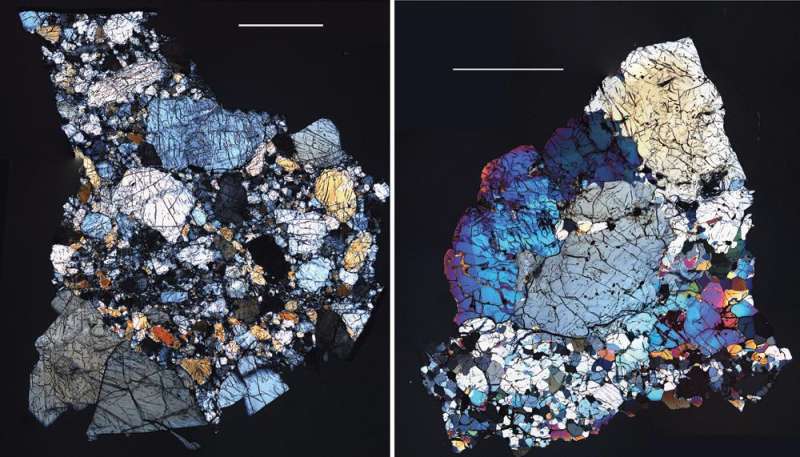
|
Credit & Copyright: NASA /
JPL-Caltech /
Hap McSween (Univ. Tennessee),
A. Beck and T. McCoy (Smithsonian Inst.)
Explanation:
These
colorful images are of thin slices of meteorites viewed through a
polarizing microscope.
Part of the group classified as HED meteorites
for their mineral content (Howardite, Eucrite, Diogenite), they likely
fell
to Earth from 4 Vesta,
the mainbelt asteroid currently being explored by NASA's
Dawn spacecraft.
Why are they thought to be from Vesta?
Because the HED meteorites have visible and infrared spectra
that match the spectrum of
that
small world.
The hypothesis of their origin on Vesta
is also consistent with data from
Dawn's ongoing observations.
Excavated
by impacts, the diogenites shown here
would have originated deep within the crust of Vesta.
Similar rocks
are also found in the lower crust of planet Earth.
A sample scale is indicated by the white bars,
each 2 millimeters long.
|
January February March April May June July August September October November December |
| ||||||||||||||||||||||||||||||||||||||||||||||||
NASA Web Site Statements, Warnings, and Disclaimers
NASA Official: Jay Norris. Specific rights apply.
A service of: LHEA at NASA / GSFC
& Michigan Tech. U.
Based on Astronomy Picture
Of the Day
Publications with keywords: Vesta - meteorit
Publications with words: Vesta - meteorit
See also:
